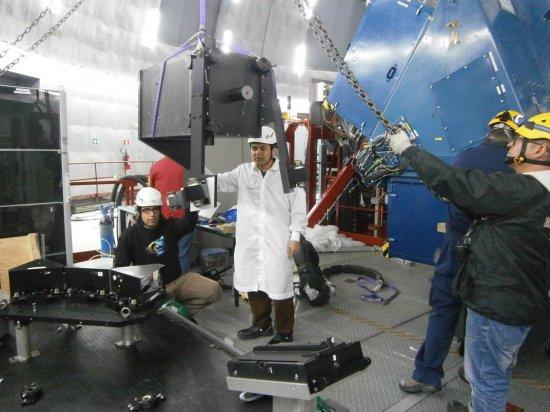It may interest you
-
 The EU-funded EDUCADO project (Exploring the Deep Universe by Computational Analysis of Data from Observations) at the Instituto de Astrofísica de Canarias (IAC) is organising a two-night astronomical observation school providing hands-on research training for early-stage researchers in astronomy and computer science. The program will convene 15 doctoral candidates from across Europe for an immersive, interdisciplinary learning experience. Attendees will engage in night time astronomical observations utilizing state-of-the-art telescopic instrumentation, guided data analysis workshops, andAdvertised on
The EU-funded EDUCADO project (Exploring the Deep Universe by Computational Analysis of Data from Observations) at the Instituto de Astrofísica de Canarias (IAC) is organising a two-night astronomical observation school providing hands-on research training for early-stage researchers in astronomy and computer science. The program will convene 15 doctoral candidates from across Europe for an immersive, interdisciplinary learning experience. Attendees will engage in night time astronomical observations utilizing state-of-the-art telescopic instrumentation, guided data analysis workshops, andAdvertised on -
 An international team, led by a student from Instituto de Astrofísica de Canarias (IAC), has detected a super-Earth orbiting in the habitable zone of GJ 3998, a nearby red dwarf located 59 ly away. The new planet, named GJ 3998 d, is the third planet found in the system. ‘GJ 3998 d is a welcome addition to the planetary census of our cosmic neighbourhood’, states Atanas Stefanov, a "La Caixa" funded PhD student at the IAC and the University of La Laguna (ULL) and the study’s lead author, published in Astronomy & Astrophysics . 'This super-Earth appears to be in the habitable zone of one ofAdvertised on
An international team, led by a student from Instituto de Astrofísica de Canarias (IAC), has detected a super-Earth orbiting in the habitable zone of GJ 3998, a nearby red dwarf located 59 ly away. The new planet, named GJ 3998 d, is the third planet found in the system. ‘GJ 3998 d is a welcome addition to the planetary census of our cosmic neighbourhood’, states Atanas Stefanov, a "La Caixa" funded PhD student at the IAC and the University of La Laguna (ULL) and the study’s lead author, published in Astronomy & Astrophysics . 'This super-Earth appears to be in the habitable zone of one ofAdvertised on -
 The Instituto de Astrofísica de Canarias (IAC) has initiated a project of science outreach in the Tenerife-II prison in El Rosario, with the aim of bringing knowledge about the Universe to the prisoners, as well as to the educational and other working personnel at that centre. This initiative is taken in the framework of the commitment of the IAC to the popularization of science as a tool for inclusión and social transformation. The project is led by the astrophysicist, and IAC researcher David Aguado and is a continuation of a first experiment in 2024 in the Madrid V prison at Soto del RealAdvertised on
The Instituto de Astrofísica de Canarias (IAC) has initiated a project of science outreach in the Tenerife-II prison in El Rosario, with the aim of bringing knowledge about the Universe to the prisoners, as well as to the educational and other working personnel at that centre. This initiative is taken in the framework of the commitment of the IAC to the popularization of science as a tool for inclusión and social transformation. The project is led by the astrophysicist, and IAC researcher David Aguado and is a continuation of a first experiment in 2024 in the Madrid V prison at Soto del RealAdvertised on
